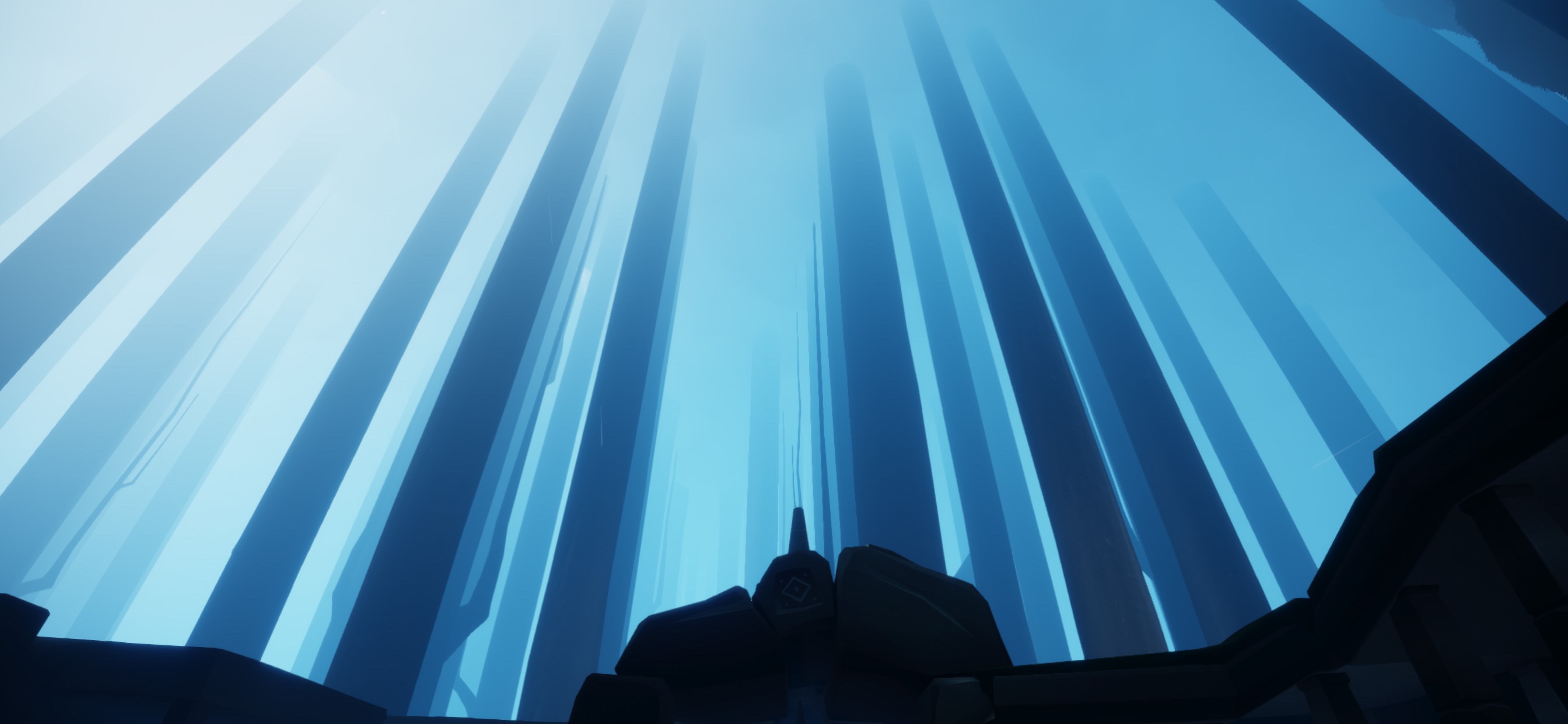Setup: iPhone XS Max, iOS 12.4
Developer: ThatGameCompany
Publisher: ThatGameCompany
Original Release Date: 7/18/2019
Platforms: iOS
Sky: Children of the Light is… a challenging game. Mechanically it’s fairly straightforward: you can move around and you can jump. You don’t have any weapons but you can clear out environmental hazards with a candle you carry around with you at all times. You can glide, and level up that glide by collecting little silhouettes of a boy as you journey around each stage. I have slight issues with how well you can control your character, but they’re very slight. I was able to beat the game without much of a problem.
When I say Sky is challenging, I mean the very concept of its existence is challenging.
It is very much like its predecessors, Journey and Flower. Like those previous games, the moments it shines are moments of movement: when everything is flowing together, in one unified direction, you can feel your spirit soaring with the game’s soundtrack. When Sky wants you to hurt, it throws everything at you: wind, rain, freezing temperatures, radioactive crystals, even boulders off the side of a mountain. In moments reserved for quiet contemplation, everything seems to want to just… float. And wait. In that way, it does what I think ThatGameCompany can do best: offer extremely tightly curated emotional experiences in a way that nobody else does.
Which is why the microtransactions and season passes were so jarring.
According to the iOS App Store, in addition to the free-to-play base game, you can purchase:
- Starter Pack: $4.99 for 19 candles (necessary for leveling up your expressions) and a limited-time-only cape
- Adventure Pass: $9.99 to unlock “new spirits, rewards and quests,” a pendant accessory, a free daily season candle and 20 bonus candles
- Bundle 1: $0.99 for three candles
- Bundle 5: $4.99 for 17 candles
- Bundle 10: $9.99 for 35 candles
- The Gratitude Pack: $14.99 for an adventure pass for you and two friends
- Winter Musician Pack: $19.99 for a piano, a different hairstyle, and exclusive winter music sheets
- Bundle 20: $19.99 for 72 candles
- Bundle 50: $49.99 for 190 candles
I want to be clear: you do not need any of these items to progress through the game’s three-to-four hour total runtime. Most deal with a series of cosmetic actions you can perform with your character and the characters around you. However, it’s confusing to me that a game that was, at least from where I’m standing, produced as a limited, finite experience is being infused with the kinds of infrastructure I’d be more comfortable finding in a Destiny or The Division; in other words, live services trappings.
I suppose it’s better than ad monetization, but the alternative in the other direction is that we could have… I don’t know… simply paid for the game. I would have been absolutely happy to throw $10 at Sky.
In general, the heightened emphasis on multiplayer really did strike me as odd. Unlike Journey, which included a severely limited multiplayer component (basically you could experience the game with an anonymous partner, warm each other up and restore each other’s scarves, and help new players get through certain areas), Sky‘s multiplayer puts the pressure on you to join up with other random players constantly and even requires you to have others with you in order to proceed through certain stages. This can be frustrating if you have to wait several minutes for someone else to hop along so you can open a door.
Those issues aside, I really want to love Sky: Children of the Light. I think it’s an absolutely gorgeous game. It’s clearly been lovingly crafted. It’s got a lot going on thematically. Personally I think it’s as much of a literal sequel to 2012’s Journey as it is a spiritual one. But therein lies the problem.
I couldn’t get Journey out of my mind as I was playing Sky. So much of this game centered around identical experiences to Journey, like gliding with creatures of light, sliding down a shimmering sand dune in the sunset, hiding from terrifying mechanical enemies built by the old civilization, watching as your character takes progressively graver environmental damage towards the end of the playthrough. Even the motifs — of death and rebirth, of hubris and remorse, of pilgrimage and of sacrifice — were very similar to Journey.
Even if your new game has tonal, mechanical or thematic similarities to previous work, I don’t know how advisable it is to make those similarities so pronounced that it leaves players thinking, “wow I wish I were playing that other game right now,” or “wow this might as well have been a port of that other game!” Eventually those storytelling tricks and methods of presentation will lose their effectiveness.
Personally, I’m not sure what Sky: Children of the Light wants me to do now. The game is a literal life-and-death-and-rebirth loop, like Journey was, but it has microtransactions and season passes and daily quests and rewards, as though it wants me to play it like an MMORPG. My first run was thought-provoking and certainly had its share of effective emotional moments, but I really can’t imagine doing the same four-hour loop every day with certain aspects only slightly tweaked.
What I do know is that, as a one-off experience and especially for folks that are new to ThatGameCompany’s work, I’d still recommend Sky: Children of the Light. For Journey fans, if you want your gliding and sand-sliding fix on mobile, go for it; otherwise, I wouldn’t call it a crucial experience.

Responses
[…] Sky: Children of the Light wants you to atone for your sins […]
[…] Related: Sky: Children of the Light Review […]